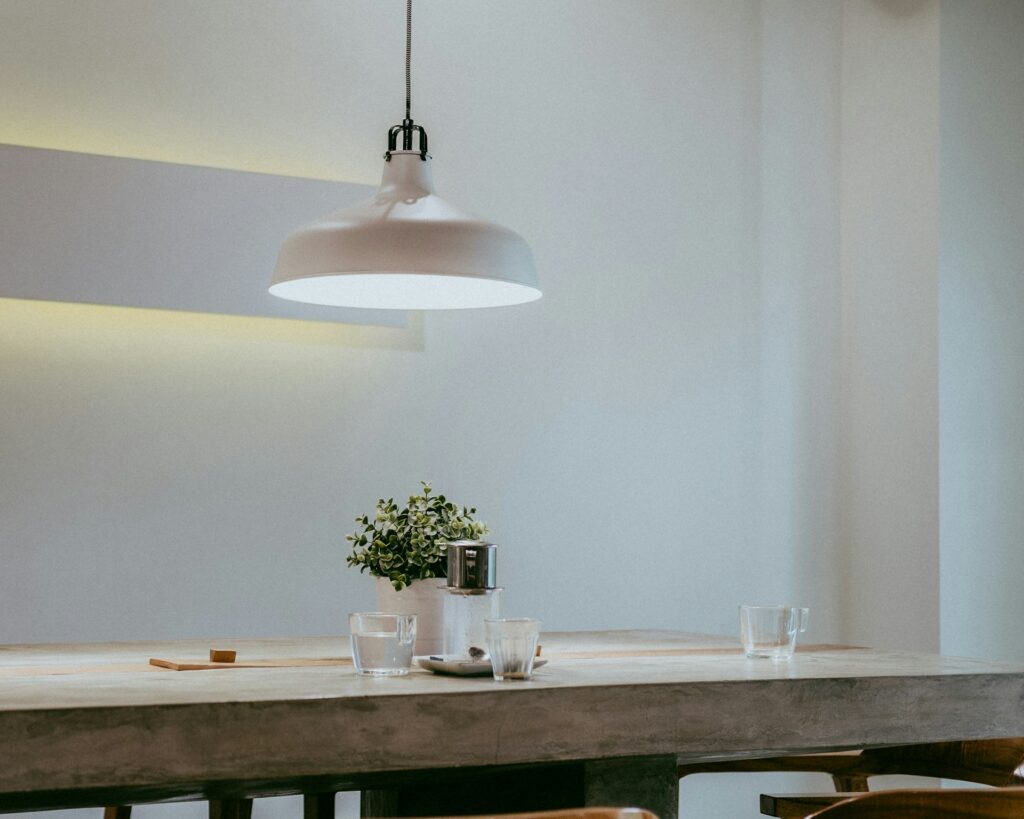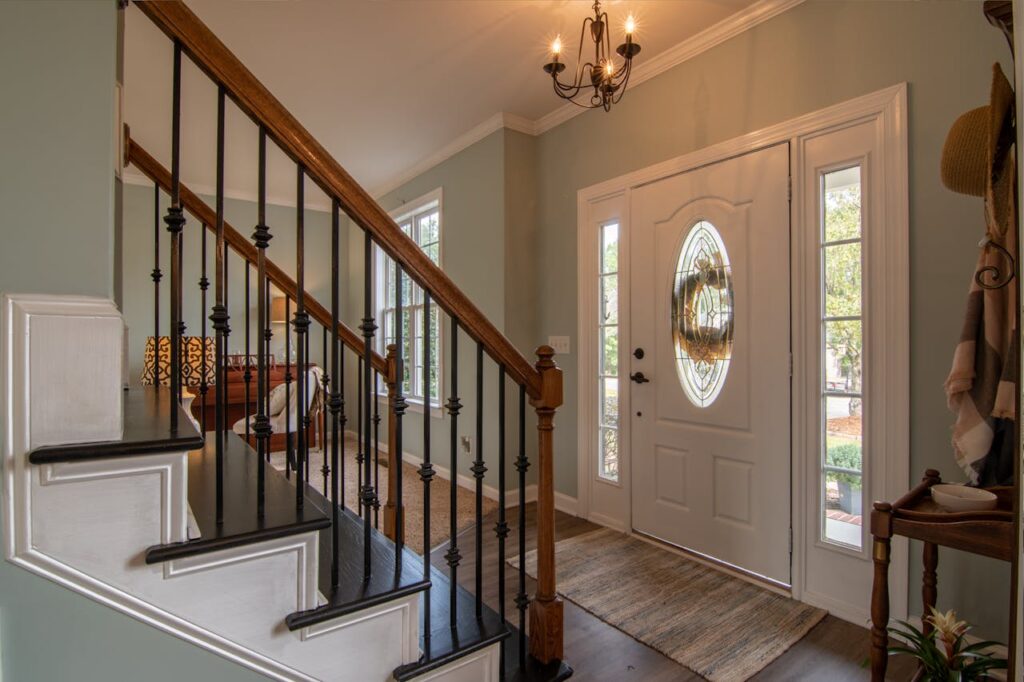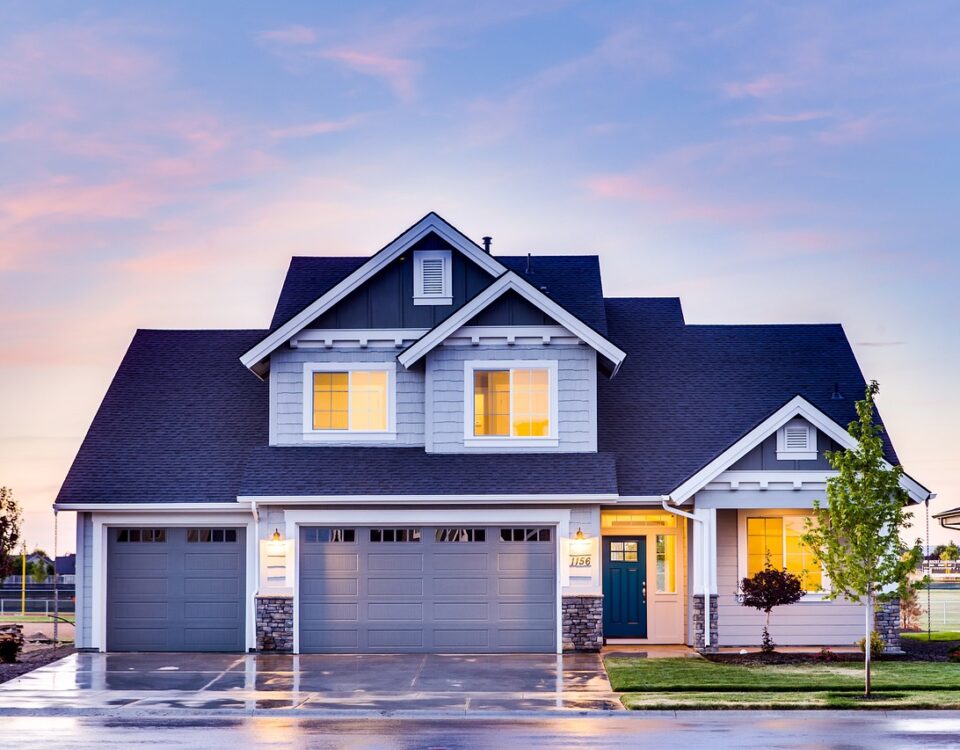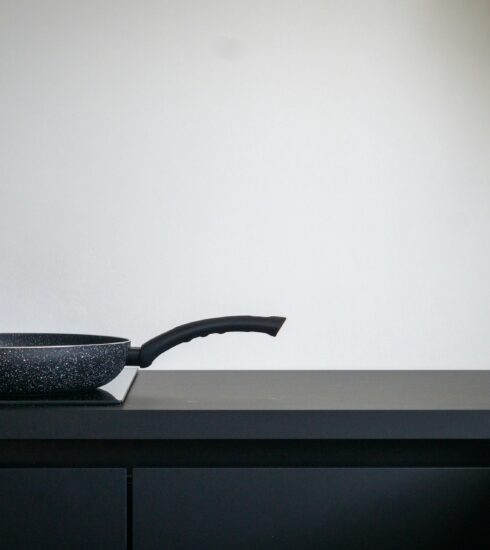Transform Your Home with Better Lighting for Seniors: A Simple Room-by-Room Guide
Aging eyes need more light to see clearly, and the wrong lighting for seniors can lead to eye strain, difficulty seeing contrast, and even an increased risk of falls. If you’re helping an elderly parent stay safe and comfortable at home, updating the lighting should be high on your to-do list.
This guide walks through every room, breaking down simple lighting changes that can make a big difference. Whether you’re adding brighter bulbs, reducing glare, or making walkways easier to navigate, these practical tips will help improve lighting for seniors and create a safer, more comfortable home.
General Lighting Tips for Aging Eyes
Before diving into specific rooms, let’s cover some basic rules that apply to the whole house.
1. Increase Overall Brightness
Aging eyes need two to five times more light than younger eyes to see clearly. Swap out dim bulbs for higher-lumen LED bulbs, and make sure rooms are well-lit, especially in areas where tasks like reading or cooking happen.
2. Keep Lighting Consistent
Sudden changes in brightness between rooms can be disorienting. Aim for smooth, even lighting throughout the house to reduce shadows and prevent falls.
3. Use Layered Lighting
A combination of ambient, task, and accent lighting makes a space more functional.
- Ambient lighting – The main source of light, like overhead fixtures.
- Task lighting – Brighter lights for specific activities like reading or cooking.
- Accent lighting – Decorative lights that highlight areas without adding glare.
4. Choose LED Bulbs
LEDs last longer, use less energy, and give off less heat, which reduces fire risk. They’re also available in different color temperatures (warm vs. cool light) to suit different needs.
5. Install Dimmers and Smart Lighting
Dimmers let seniors adjust light levels based on time of day and activity. Smart bulbs can be controlled with voice commands or apps, making them easier to use for those with mobility issues.
Living Room Lighting for Seniors
The living room is where most people relax, read, or watch TV. The lighting should be bright enough to see comfortably but soft enough to avoid glare.
1. Maximize Natural Light
- Keep windows clean and unobstructed.
- Use sheer curtains or blinds that allow light in without harsh glare.
2. Reduce Glare
Glare can make it harder to see and cause eye fatigue. Try these fixes:
- Use lampshades or diffusers to soften bright light.
- Swap glossy furniture and decor for matte finishes.
- Position lights away from reflective surfaces like glass tabletops.
3. Add Task Lighting
- Reading lamps should have adjustable brightness and be positioned to the side or slightly behind the reader.
- Floor lamps with soft white or warm LED bulbs provide better visibility without harsh contrast.
4. Pick the Right Color Temperature
Cool white light can feel too harsh in a living room. Aim for bulbs in the 2700K-3000K range for a warm, cozy feel.
Kitchen Lighting for Seniors
The kitchen is a high-activity area where good lighting is essential. Poor lighting here can make cooking frustrating—and even dangerous. The goal is to reduce shadows, improve visibility, and make sure countertops are well-lit.

1. Brighten Up the Whole Room
- Overhead recessed lighting or bright ceiling fixtures help evenly distribute light.
- Use T5 fluorescent or LED lights to provide a consistent, glare-free glow.
- Make sure there are no dark corners—especially near the stove and sink.
2. Add Under-Cabinet Lights
One of the biggest issues in kitchens is shadows on countertops. Under-cabinet lighting helps by:
- Illuminating food prep areas to prevent accidents.
- Reducing eye strain when chopping or reading recipes.
- Providing extra brightness without being too harsh.
Look for LED strip lights or puck lights—both are easy to install and energy-efficient.
3. Use Matte or Frosted Light Fixtures
Glossy surfaces can cause glare, making it harder to see clearly. Instead:
- Choose matte or frosted finishes for light fixtures.
- Avoid shiny countertops that reflect light too harshly.
4. Keep Pathways Well-Lit
- If the kitchen connects to other rooms, ensure consistent lighting to prevent sudden brightness changes.
- Install motion-activated nightlights to help seniors navigate the kitchen safely at night.
Bedroom Lighting for Seniors
A bedroom should be a relaxing space, but it also needs to be functional. Seniors often wake up during the night, and poor lighting can make it hard to move around safely. The goal here is to eliminate harsh overhead lights, add easy-to-control bedside lighting, and improve nighttime visibility.
1. Avoid Direct Overhead Lighting
Bright overhead lights can be too harsh when lying in bed. Instead:
- Use ceiling lights with diffusers to soften brightness.
- Install wall sconces or pendant lights to create indirect lighting.
2. Add Easy-to-Reach Bedside Lamps
- Pick touch-activated or remote-controlled lamps to make turning them on and off effortless.
- Adjustable swing-arm lamps are great for reading.
- Go for warm, soft-white bulbs (2700K-3000K) for a calming feel.
3. Improve Closet Lighting
- Install motion-sensor LED strips inside closets for better visibility.
- Overhead fluorescent or LED fixtures above closet doors work well too.
4. Light Up Nighttime Pathways
Getting up at night can be risky in the dark. Reduce fall hazards by:
- Placing motion-activated nightlights along walkways.
- Using glow-in-the-dark light switches for easy access.
- Installing LED strips under the bed to give off soft, indirect light.
A well-lit bedroom makes it easier to relax while also ensuring safe movement at night.
Bathroom Lighting for Seniors
The bathroom is one of the most hazardous rooms in the house for seniors. Wet floors, poor contrast, and shadows can all lead to falls. The goal here is even, bright lighting with minimal glare, making grooming and nighttime trips to the bathroom safer and easier.
1. Use Even, Glare-Free Lighting
- Overhead fixtures should provide consistent, diffused light—no harsh shadows.
- Avoid bare bulbs or spotlights that can create glare on glossy tiles or mirrors.
- LED panels or flush-mount ceiling fixtures work well.
2. Install Proper Vanity Lighting
- Place lights on both sides of the mirror instead of overhead to avoid casting shadows on the face.
- Look for vertical, frosted sconces next to the mirror for a more natural, balanced light.
- Use bulbs in the 3000K-4000K range for a crisp but not overly harsh light.
3. Add Nightlights for Safe Navigation
Many seniors wake up at night and need to use the bathroom. Instead of fumbling for a light switch, try:
- Motion-activated nightlights near the doorway and toilet.
- Soft-glow LED strips along baseboards to provide low-level illumination.
- Glow-in-the-dark switches to make controls easier to find.
4. Light Up the Shower Area

- If the shower is dim, add a sealed, waterproof LED light inside.
- Consider contrasting colors on walls and floors to help define edges and reduce visual confusion.
A well-lit bathroom improves visibility, boosts confidence, and reduces the risk of accidents.
Hallway and Stair Lighting for Seniors
Hallways and staircases are common fall zones, especially when lighting is poor. Shadows, uneven lighting, and missed steps can be dangerous. The goal here is consistent, bright lighting that eliminates dark spots and improves depth perception.

1. Keep Hallways Well-Lit
- Use ceiling-mounted LED fixtures spaced evenly to avoid shadows.
- If overhead lighting isn’t an option, try wall sconces placed at regular intervals.
- Make sure light switches are easy to find, ideally at both ends of the hallway.
2. Add Motion-Activated Lights
For seniors who get up at night, motion-activated nightlights along hallways and stairs can prevent falls. These:
- Turn on automatically when movement is detected.
- Provide just enough light to navigate safely without disrupting sleep.
- Work well when placed at floor level or near baseboards.
3. Install Handrail Lighting on Stairs
- LED strip lighting under the handrail provides extra visibility without being too harsh.
- If possible, add step lighting to highlight each tread and reduce the chance of missteps.
4. Use Contrasting Colors for Visibility
- If walls and floors blend together, it can be harder to see where one ends and the other begins.
- Consider darker baseboards or striped stair edges to improve depth perception.
Hallways and stairs should have zero dark spots, making it easy to move safely from one part of the house to another.
Home Office or Study Area Lighting for Seniors
If your aging parent enjoys reading, working on hobbies, or using a computer, good lighting in their home office or study is a must. Poor lighting can lead to eye strain, headaches, and difficulty focusing. The goal here is to eliminate glare, provide direct task lighting, and use natural light wisely.
1. Use Adjustable Task Lighting
- Desk lamps with adjustable arms allow for precise lighting.
- Choose LED bulbs with a brightness of at least 800 lumens for reading or detailed work.
- Position task lights above and slightly behind the line of sight to reduce glare.
2. Reduce Glare on Screens
For seniors who use a computer or tablet:
- Position the monitor at a 90-degree angle to windows to minimize glare.
- Use anti-glare screen filters if bright reflections are an issue.
- Keep overhead lighting indirect to prevent screen reflections.
3. Maximize Natural Light (With Caution)
- Place the desk near a window to benefit from daylight, but use blinds or sheer curtains to diffuse harsh sunlight.
- Avoid positioning desks where direct sunlight hits screens or reading surfaces.
4. Keep General Lighting Consistent
- The entire room should have even lighting to prevent eye strain when switching between bright and dim areas.
- Use LED panel lights or overhead fixtures to create a well-lit space.
A well-lit home office makes work, reading, and hobbies more enjoyable and less tiring for aging eyes.
Additional Tips for Improving Lighting for Seniors
Beyond room-by-room adjustments, there are a few extra tricks that can make a big impact on safety and comfort for aging eyes.
1. Use Higher-Lumen Bulbs
Aging eyes need brighter light, but that doesn’t mean adding more fixtures. Instead:
- Look for bulbs with at least 800-1100 lumens for general lighting.
- Go even brighter (1600 lumens or more) for task lighting in places like kitchens and reading nooks.
2. Consider Smart Lighting for Convenience
Smart lighting is a game-changer for seniors with mobility or vision challenges. Features like:
- Voice-controlled lights (with Alexa, Google Home, or Siri).
- Motion-activated bulbs in high-traffic areas.
- Remote-controlled lamps for easy adjustments without getting up.
3. Increase Contrast for Better Visibility
Low contrast makes it harder to see edges, stairs, and furniture. Try:
- Dark baseboards against light walls to help define spaces.
- Contrasting stair treads to make steps stand out.
- Colored switch plates instead of white-on-white to make light switches easier to find.
4. Keep Décor Simple to Reduce Visual Confusion
- Busy, patterned rugs or wallpaper can make it harder to see clearly.
- Stick to solid colors and high-contrast designs to help seniors navigate safely.
5. Maintain Light Fixtures Regularly
- Dust and clean bulbs and fixtures to maintain brightness.
- Replace dim or flickering bulbs immediately to avoid eye strain.
- Check for burnt-out lights in hallways, stairs, and bathrooms to prevent falls.
A Well-Lit Home Means a Safer, More Comfortable Home

Small lighting upgrades can make a huge difference for seniors living at home. Brighter spaces, reduced glare, and smart lighting solutions improve safety, boost confidence, and make daily life easier.
Take a walk through your parent’s home and look for dark corners, shadowy hallways, or hard-to-reach switches. Making a few changes now can help them stay independent, comfortable, and safe for years to come.
Frequently Asked Questions (FAQ)
1. What type of lighting is best for seniors with aging eyes?
Seniors need bright, even lighting that reduces glare and minimizes shadows. LED bulbs are the best choice because they provide high brightness, last longer, and don’t get hot. Look for bulbs with at least 800-1100 lumens for general lighting and 1600 lumens or more for task lighting.
2. What color temperature is easiest on aging eyes?
For most areas in the home, warm white (2700K-3000K) is ideal because it’s softer and more comfortable. In task areas like kitchens and bathrooms, a cooler white (3500K-4000K) can provide better contrast without being too harsh. Avoid blue-tinted daylight bulbs (5000K and above), as they can cause glare and eye strain.
3. How can I reduce glare in my elderly parent’s home?
Glare can make it hard for seniors to see clearly. Try these solutions:
- Use diffused or frosted light fixtures instead of exposed bulbs.
- Choose matte finishes for furniture, countertops, and floors.
- Angle task lighting correctly to avoid reflections on reading surfaces and screens.
- Use blinds or sheer curtains to soften natural sunlight.
4. What are the best lighting upgrades to prevent falls?
- Motion-activated nightlights in hallways, bathrooms, and bedrooms.
- Step lighting or handrail lighting for stairs.
- Consistent, bright lighting throughout the home to eliminate dark areas.
- Under-cabinet lighting in the kitchen to prevent shadows while cooking.
5. How can smart lighting help seniors?
Smart lighting makes it easier for seniors to control their lights without needing to reach switches. Voice-controlled bulbs, motion-activated lighting, and remote-controlled lamps allow them to adjust brightness, turn lights on or off, and improve visibility instantly—all without extra effort.
These simple lighting adjustments can make a home safer, more comfortable, and easier to navigate for seniors.





6 Comments
How to Make Your Home Safer With Home Safety Mobility Aids - Eldernook
3 weeks ago[…] Poor lighting – Dim hallways and dark stairwells make it hard to see obstacles. […]
7 Senior Kitchen Safety Modifications for Safer Cooking at Home - Eldernook
3 weeks ago[…] Dim lighting in the kitchen can lead to spills, burns, and even falls. As eyesight changes with age, making sure the kitchen is well-lit is one of the simplest and most effective senior kitchen safety modifications. […]
How Fall Detection Sensors Are Saving Lives Among Seniors - Eldernook
3 weeks ago[…] Integration with smart lights and cameras to improve home safety […]
Benefits of Home Monitoring Systems for Seniors - Eldernook
3 weeks ago[…] Automated lighting can prevent falls by turning on when movement is detected at night. […]
Best Room-by-Room Setup Guide for Smart Home Aging in Place - Eldernook
3 weeks ago[…] Good lighting helps prevent falls, especially in the evening. Smart bulbs and switches can be controlled by voice, phone app, or motion sensors. Look for: […]
Accessible Home Modifications for Independent older family
3 days ago[…] Bad lighting is one of the sneakiest risks in the house. Most people don’t even think about it—until someone falls trying to find the bathroom at 3AM. […]